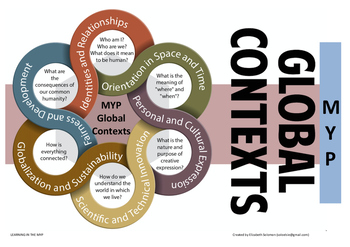What’s in the policy?

The policy focuses on the safe, responsible and respectful use of digital technology and describes when and how digital devices and online services are used at school:
Following, then, we will look at ideas for demonstrating what context is, exposing it in the language you are teaching and applying it to both language study and classroom management. Download: This blog post is available as a convenient and portable PDF that you can take anywhere. This well-planned lesson, which uses posters on slavery and abolition, teaches students to ask important questions as they read a primary source.First, the teacher models the task by analyzing a representative poster in front of the classroom. In small groups, students then analyze additional posters, locating such information as author, audience, purpose, and message.
Now in its third edition, this book provides hundreds of visual examples of making STEM, Digital Technologies and Critical Thinking actionable tasks in your classroom. It also provides case studies and context to the skills being taught so that you can talk the talk, and walk the walk in this space. Download the worksheet (184.89 Kb, 0 downloads). By Digital Theatre Plus. As well as the context of your students.
Primary-agedstudents may not use digital devices during class time, recess and lunch unless for an educational purpose or for other reasons such as an adjustment to support learning and wellbeing.
Secondary principals will have the flexibility to opt into any restriction on the use of devices or use an approach that best suits the learning and wellbeing needs of their school community.

The policy applies to any device that connects to the internet and runs applications.
Schools – in consultation with their community – are expected to update an existing school procedure or develop anew one.
This new policy gives school communities the opportunity to work together – as parents, as carers, as educators – to support our children and young people to learn to be safe,responsible and respectful users of digital devices and online services.
What does this mean for schools?
Digital technology has become an important part of students’ day-to-day lives. It is important for learning, communicating, working and playing, but it also comes with some risks.
Schools need to balance the importance of digital technology in learning with the responsibility to support children and young people to use technology in safe, respectful and responsible ways.
What support is available for schools?
Difference Between Context And Exigence
- Frequently asked questions (PDF 670.12KB)
Consultation resources and surveys
The Student Use of Digital Devices and Online Services policy requires schools to consult with their school communities in the development of their school procedure.
These resources and surveys can assist schools consult on the school’s Student Use of Digital Devices and Online Services procedure and also support school leaders to gather feedback to inform the school’s digital directions.
Consultation resources
There are separate resources for staff, students and parents/carers. The consultation resources can be modified to meet the school context and include information for both primary and secondary settings.
Students
Staff
Parents

Surveys
There are separate surveys for staff, students and parents/carers. The surveys can be modified to meet the school context and include information for both primary and secondary settings.
Microsoft form survey
Google form survey
Guides
Writing school procedures
- Customise your own school procedure with an online form (requires NSW Department of Education login)
Professional learning
The Student use of digital devices and online services professional learning course develops participant knowledge about the new policy and the procedures to be implemented in NSW public schools. This face-to-face workshop uses a range of delivery methods to develop teacher knowledge of the new policy and provides schools with resources to implement the policy in their school.
(Please note: This professional learning is delivered face-to-face by a school leader. Once a session is scheduled, the school leader will be able to download the session resources.)
Lesson plans
These two-hour workshops support students to use digital devices in safe, responsible and respectful ways. There are three different 2 hour workshops aligned to NSW Curriculum for Stage 2, 3 and 4 students.

They draw on existing resources and knowledge to create hands-on, discussion-based activities that benefit the whole school community.
Working with the school community
Speaker Purpose Audience Context Exigence
Communication resources
- What Safe, Responsible and Respectful use means to students (PDF 1395.85KB)
Relevant legal issues
The Department maintains legal issues bulletins with important legal information for schools. In relation to digital devices and online services at schools, principals and teachers should be aware of all relevant legal issues bulletins, including bulletins 8, 35 and 56: